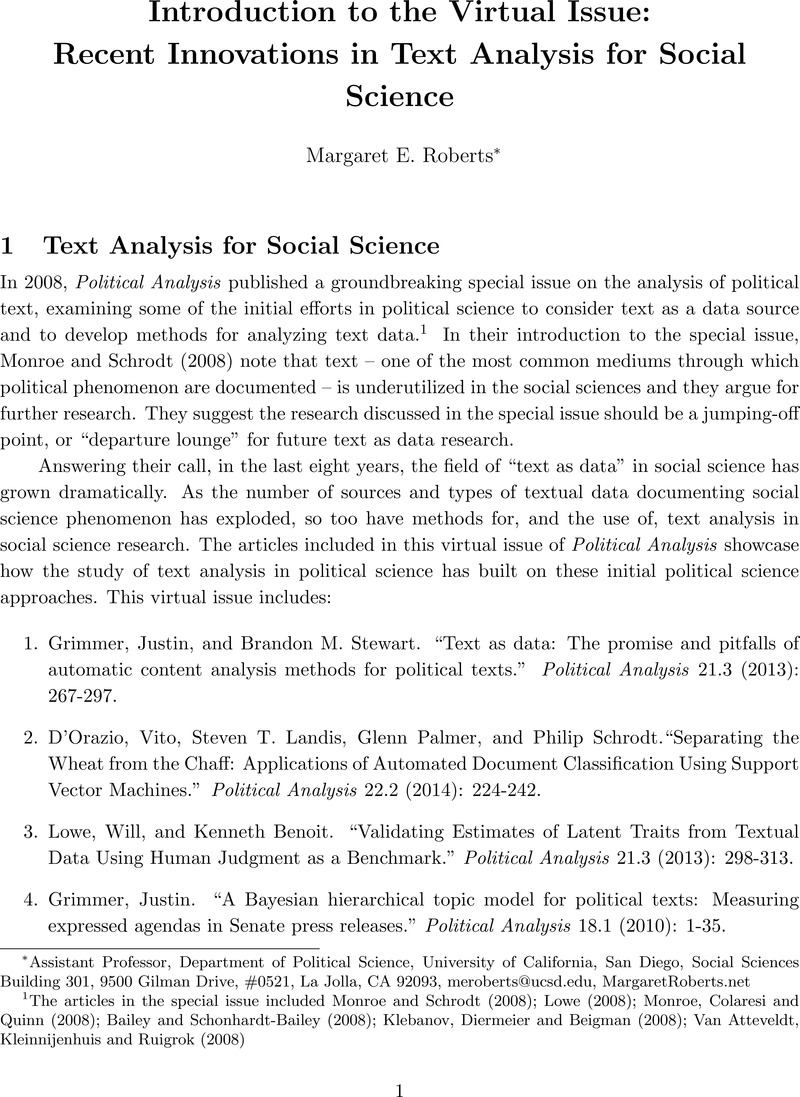Crossref Citations
This article has been cited by the following publications. This list is generated based on data provided by Crossref.
Klebel, Thomas
2018.
jstor: Import and Analyse Data from Scientific Texts.
Journal of Open Source Software,
Vol. 3,
Issue. 28,
p.
883.
Jankowski, Michael
Schneider, Sebastian H.
and
Tepe, Markus
2019.
Identität - Identifikation - Ideologie.
p.
141.
Moreira, Davi
2020.
Com a Palavra os Nobres Deputados: Ênfase Temática dos Discursos dos Parlamentares Brasileiros.
Dados,
Vol. 63,
Issue. 1,
Baden, Christian
Pipal, Christian
Schoonvelde, Martijn
and
van der Velden, Mariken A. C. G
2022.
Three Gaps in Computational Text Analysis Methods for Social Sciences: A Research Agenda.
Communication Methods and Measures,
Vol. 16,
Issue. 1,
p.
1.
Dreier, Sarah K.
Gade, Emily K.
Card, Dallas
and
Smith, Noah A.
2022.
Patterns of Bias: How Mainstream Media Operationalize Links between Mass Shootings and Terrorism.
Political Communication,
Vol. 39,
Issue. 6,
p.
755.
Dreier, Sarah K.
Gade, Emily K.
Card, Dallas
and
Smith, Noah A.
2022.
Patterns of Bias: How Mainstream Media Operationalize Links between Mass Shootings and Terrorism.
SSRN Electronic Journal ,
Boussalis, Constantine
Dukalskis, Alexander
and
Gerschewski, Johannes
2023.
Why It Matters What Autocrats Say: Assessing Competing Theories of Propaganda.
Problems of Post-Communism,
Vol. 70,
Issue. 3,
p.
241.


